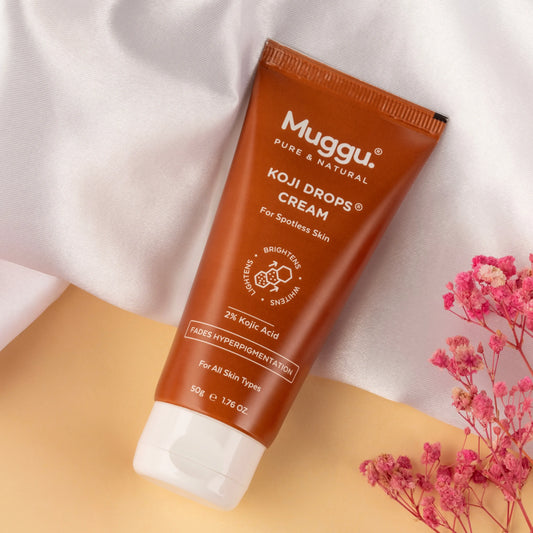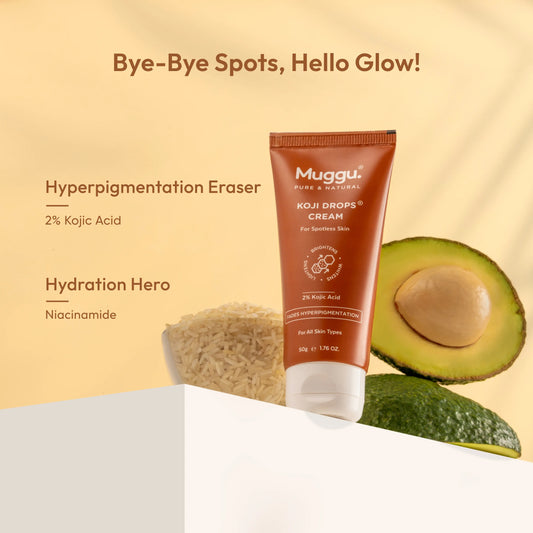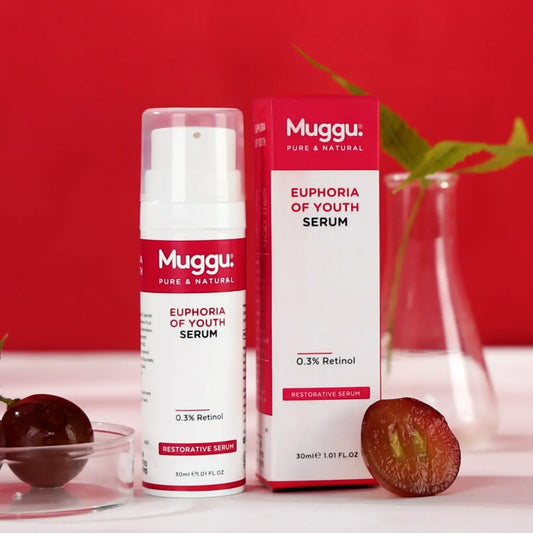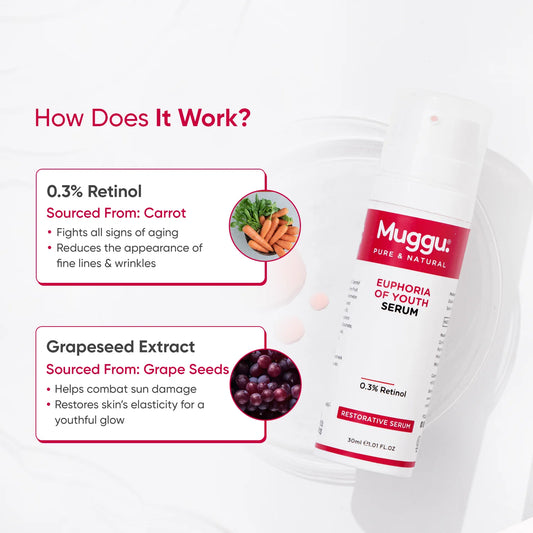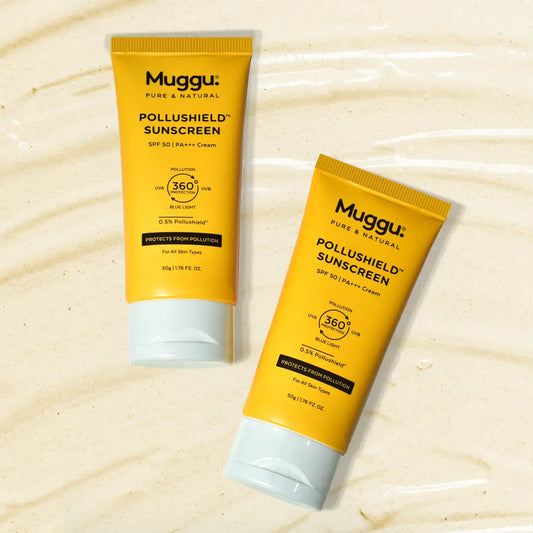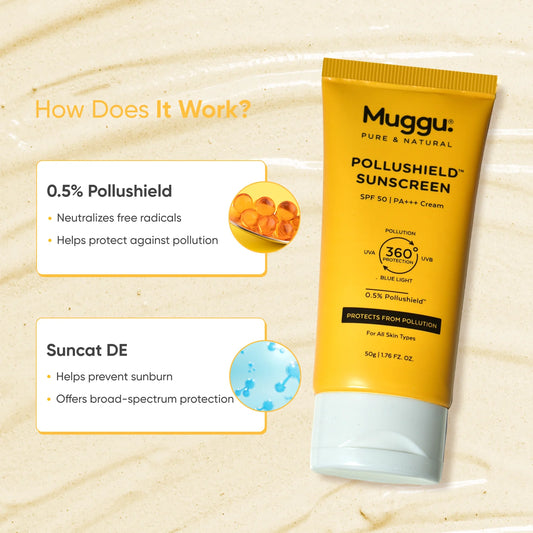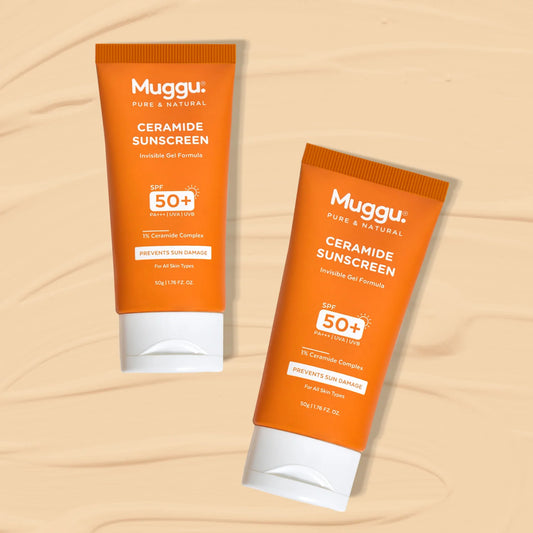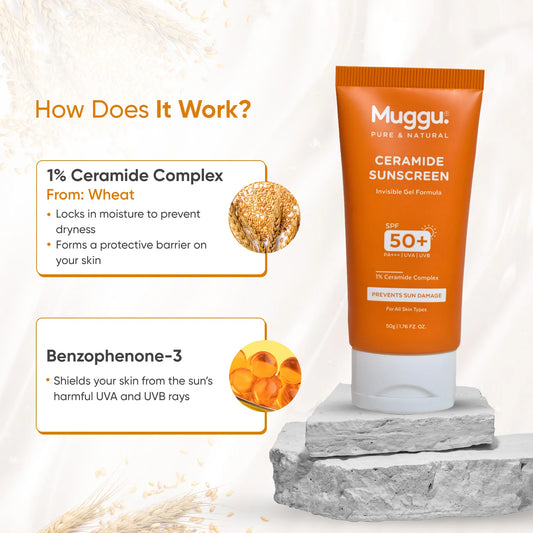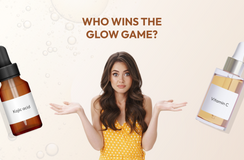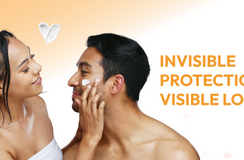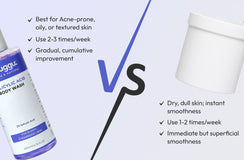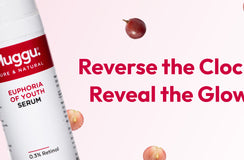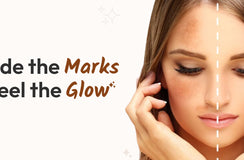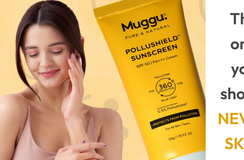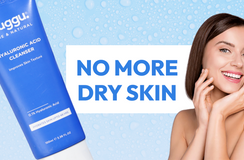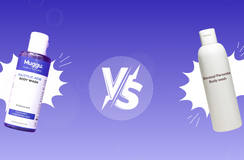When you’re investing time, effort, and energy into your skincare routine, layering serums, patting on creams, and making sure your skin drinks enough water to rival a houseplant, you want to be sure it’s actually working. Especially when it comes to targeted ingredients like kojic acid, widely known for its skin-brightening and spot-reducing powers.
However, this is the twist that many do not notice - the best kojic acid cream may fail to perform well just because it has the wrong pH level.
That's right! Whether or not your skincare product works can be determined by the pH level.
In this blog, we’ll explore what pH is, why it matters, how it affects kojic acid in particular, and what you can do to make sure you’re getting the most out of your favorite brightening cream.
What is Kojic Acid and Why is it in Your Cream?
Before we get all sciencey with pH, let’s first refresh our memory on kojic acid.
Kojic Acid: The Skin-Brightening Star
Kojic acid is a natural compound derived from fermented rice, mushrooms, or sake. It works by:
-
Inhibiting tyrosinase, an enzyme involved in melanin production
-
Reducing hyperpigmentation, dark spots, and acne scars
-
Evening out skin tone
-
Brightening dull skin over time
It’s often used in creams, serums, and soaps, especially in products aimed at treating melasma, sun spots, and post-inflammatory pigmentation.
Sounds magical? It really can be, but only if it’s properly formulated. And that’s where pH comes in.
What is pH, and Why Does It Matter in Skincare?
Quick Science Lesson: pH 101

pH stands for “potential hydrogen,” and it measures how acidic or alkaline a substance is. It’s measured on a scale of 0 to 14:
-
0-6 = acidic
-
7 = neutral
-
8-14 = alkaline (basic)
Your skin’s natural pH hovers around 4.5 to 5.5, which is slightly acidic. This acidity helps maintain the acid mantle i.e your skin’s protective barrier that keeps moisture in and harmful bacteria out.
In Skincare Formulations
Every active ingredient in skincare has an optimal pH range where it works best. Step outside that range, and the ingredient either stops working or starts irritating your skin.
So, What Is the Ideal pH for Kojic Acid?
Kojic acid is most stable and effective at a pH range of 4.0 to 5.5, which just so happens to align beautifully with the skin’s natural pH.
Why This pH Range Matters:
1. Effectiveness: At this acidic pH, kojic acid is able to penetrate the upper layers of the skin and inhibit tyrosinase activity effectively.
2. Stability: Kojic acid is known to be unstable. It oxidizes and loses potency when exposed to light, air, or when the pH is too high (alkaline).
3. Skin Compatibility: A pH between 4 and 5.5 minimizes irritation while maximizing absorption.
Formulate it too low (pH below 3.5) and you risk irritation and barrier damage. Formulate it too high (above 6) and it becomes ineffective or unstable.
What Happens If pH Levels Are Off?
Let’s break it down with two scenarios:
1. Too Alkaline (pH > 6)
-
Kojic acid becomes less stable and may degrade.
-
It loses its ability to effectively inhibit tyrosinase.
-
You may not see any results, even after weeks of use.
-
Alkaline products can disrupt your skin barrier and cause dryness.
2. Too Acidic (pH < 3.5)
-
You might feel burning, stinging, or excessive sensitivity.
-
Kojic acid becomes too aggressive and may cause inflammation.
-
Can lead to compromised barrier, peeling, or even breakouts.
It’s a delicate balance, and that’s why formulation science is everything when it comes to dark spots cream with kojic acid.
pH and Product Stability: Not Just About Effectiveness
Even if your kojic acid cream claims a high concentration (like 2%), it’s practically meaningless if the product is unstable. Poorly formulated creams oxidize quickly, turning brown, smelling off, or losing potency long before the expiration date.
Signs Your Kojic Acid Cream Is Oxidizing
-
Color darkens (from white to yellow or brown)
-
The smell changes (metallic, sour, or burnt scent)
-
The texture changes (watery or chunky separation)
-
It stops working altogether
Keeping pH in the sweet spot helps delay oxidation and extends the product's shelf life.
Can You Check the pH of Your Kojic Acid Cream?

You actually can, though it’s not something everyone needs to do. But if you're a curious DIY skincare person:
-
Use pH indicator strips (available online).
-
Apply a small amount of the cream onto a clean surface.
-
Place the strip onto the cream and wait for it to change color.
-
Compare it to the chart provided with the strips.
Look for a pH range between 4 and 5.5. If it’s way above or below, that’s a red flag.
Tips for Making Sure Your Kojic Acid Cream Works
1. Choose Reputable Brands
Look for formulations from trusted brands that emphasize pH-balanced products, use air-tight packaging, and include stabilizers or supporting ingredients like:
-
Niacinamide (boosts skin barrier)
-
Allantoin (soothes irritation)
-
Licorice extract (aids brightening)
-
Hyaluronic acid (adds hydration)
2. Avoid Combining With High-pH Products
Don’t use kojic acid cream right after a foaming cleanser with a high pH (above 7–8). It can throw off your skin's acid mantle and reduce efficacy.
Use a gentle, low-pH cleanser instead, ideally one between 4.5-6.
3. Store It Properly
-
Keep it in a cool, dry place, away from direct sunlight.
-
Always close the lid tightly.
-
If it’s in a tub, use a spatula to avoid contamination.
4. Don’t Layer With Strong Acids (Unless Advised)
Avoid using kojic acid with very low pH acids like glycolic acid or pure vitamin C (ascorbic acid) unless it’s a well-formulated product meant for layering. Otherwise, it may cause irritation.
Kojic Acid Cream vs. Kojic Acid Serums: Does pH Work the Same?
Yes, the pH principle remains the same across formats, whether it’s a cream, serum, gel, or lotion.
However, serums usually penetrate faster due to their lighter base. That means pH becomes even more important, especially in ensuring that the active remains stable and gentle enough for regular use.
The Role of pH in Kojic Acid Creams With Other Actives
If your kojic acid cream contains additional ingredients, pH balance becomes even more nuanced. Some examples:
-
Niacinamide: Stable between pH 5–7; still compatible with kojic acid at pH 5.
-
Vitamin C (ascorbic acid): Needs pH < 3.5; not ideal in the same product unless carefully formulated.
-
AHA (like glycolic/lactic acid): Also prefers low pH; can increase irritation when combined.
Bottom line? Trust the formulators and don’t DIY mix unless you’re a cosmetic chemist with a lab coat and a certificate.
FAQs
1. What’s the ideal pH range for kojic acid cream?
Ideally, between pH 4.0 and 5.5. This range ensures that kojic acid remains stable and effective while staying gentle on the skin.
2. How can I know if my kojic acid cream is working?
Look for:
-
Gradual fading of dark spots or pigmentation
-
Brighter, more even-toned skin
-
Reduced appearance of sun damage or acne marks (over 4-8 weeks)
-
No signs of irritation, burning, or dryness
3. My cream turned brown. Should I still use it?
No. Browning is a sign that the kojic acid has oxidized and is no longer active. It may also irritate the skin. Time to replace it.
4. Can kojic acid cause irritation?
Yes, especially if the pH is too low or the concentration is too high (above 2%). Always patch test and use only as directed.
5. Is it okay to use kojic acid every day?
Yes, if your skin tolerates it and the product is well-formulated. Start with once daily, preferably at night, and moisturize afterward.
6. Can I layer kojic acid with other acids?
Caution is key. Mixing kojic acid with other exfoliants or acids can increase irritation. If you want to pair actives, use one in the morning and one at night, or alternate days.
Final Thoughts
Understanding the pH level of your kojic acid cream is like unlocking the hidden blueprint to its success. It’s not just about what’s inside the product. It’s about how your skin receives and processes it.
A kojic acid cream with the right pH (between 4-5.5) can transform dullness, reduce pigmentation, and brighten your skin tone over time.
So the next time you slather on your brightening cream, take a moment to think about the pH. Your skin might just thank you with that glow you’ve been chasing.
